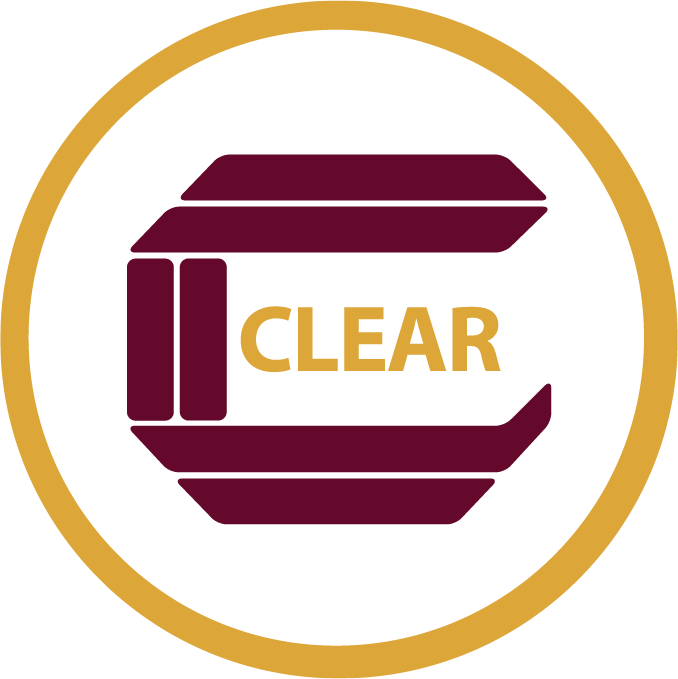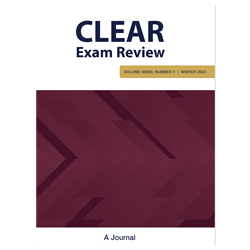CLEAR Exam Review Summer 2024
CLEAR Journal of Professional Regulation
CLEAR Exam Review Summer 2024, Volume 34, No. 1
-Abstracts and Updates, by George Gray- In Abstracts and Updates, George Gray features three different topics: ChatGPT in measurement and educational contexts; assessment in higher education, focusing on the book’s first four chapters illustrating methods of assessment of diversity, equity, and inclusion (DEI); and a psychometrically oriented book on the D-scoring method of measurement. While all these abstracts relate to assessment, our hope is that all members of the CLEAR community can use these works as a starting point to deepen their understanding as these concepts grow from buzzword acronyms to significant forces for positive change in our organizations.
-Legal Beat, by Dale Atkinson- Legal Beat focuses on Browne v. Poole, a case that went all the way to the Kentucky Supreme Court. This case includes many relevant concerns for the regulatory community: What happens when a candidate takes legal action against a regulatory body that had to inform the candidate of an incorrectly reported result? Can an individual regulator be held personally liable for the Plaintiff’s alleged emotional duress, suffering, and loss of employment and income?
-Recent CLEAR Quick Poll Results, by Carla Caro- Carla Caro does a masterful job summarizing four of the recent Quick Polls administered by CLEAR. This selection of polls covers a wide range of topics: (translated) language accommodations, evidence of exam validity, a Quick Poll on Quick Polls, and number of exam attempts. The Quick Poll subcommittee operates under the guidance of the Examination Resources and Advisory Committee (ERAC) and continues to make a strong effort to provide Quick Poll topics that are broadly relevant to the CLEAR community.
-AI in Credentialing Exams: Where do I start?, by Nathan Thompson and Alan Mead- Our first feature article provide an informative and approachable introduction to AI in credentialing exams. This article will familiarize readers with some AI terms, describe how forms of AI have been used in testing for longer than you might realize, and introduce some cutting-edge research on Open AI models and item development.
-Use of a DACUM-based Process to Develop a Predicted Ability Measurement Examination for Nursing Students, by Vicki Moran, Katy Haynicz-Smith, and Joy L. Matthews-López- This article describes using a customized version of the Developing a Curriculum (DACUM) process in the development of a predicted ability measurement examination (PAME) for the National Council Licensure Examination for Registered Nurses (NCLEX-RN). This valuable paper documents the science and rigor necessary to develop a PAME, describing how the DACUM process functioned as a form of job analysis and the subsequent rigorous development work in support of the predictive validity of this exam.
-Current Workforce Trends: Worker Shortages and Skills-Based Hiring, by Caroline George- Our last featured article broadens the scope of CER by taking a detailed look at how the predictions in the Hudson Institute’s Workforce 2000 have played out more than 45 years since its publication. This article is an intentional broadening of the historically narrower lens of assessment and measurement issues that have traditionally been the focus of CER. Our hope is that this article will appeal to the entirety of CLEAR’s membership, not only those who work with or for testing organizations.

